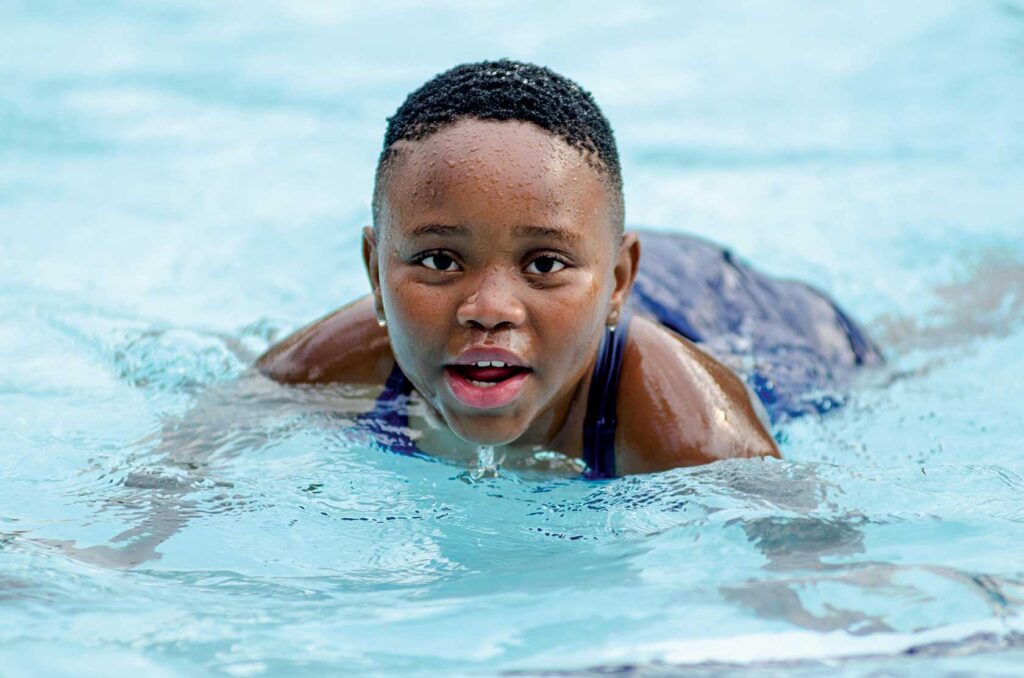Safeguarding summer: Boston’s initiatives for swim safety and water awareness

As summer unfolds and temperatures rise, Bostonians are eagerly anticipating days spent cooling off in local pools, beaches and rivers. While swimming offers a refreshing escape from the heat, ensuring safety should be a top priority for everyone, from families to individuals seeking relaxation and recreation.
In February, Mayor Michelle Wu announced the city of Boston would be adding funding to its water safety program — the city’s Swim Safe initiative. This comes off of a significant investment made by the city to offer free swimming lessons throughout the wintertime.
“As a coastal city, we want to make sure all our young people can safely enjoy our water and pools,” said Wu. “By expanding our Swim Safe partnership, we’re ensuring our youth are also able to explore all their interests to make Boston the best place to raise a family.”
Following its official inception, the Swim Safe initiative has offered free swim lessons to more than 1,000 youth participants. Previous funding supported free swim lessons in Boston pools at the YMCA of Greater Boston, Boys & Girls Clubs of Boston and DotHouse Health.
The Swim Safe Boston partnership launched in 2021 in response to the tragic rise of drownings in Greater Boston. In recent years, Boston has witnessed a notable uptick in drownings, particularly among children and young adults. Massachusetts drowning incidents have been on the rise since 2021, with most drowning deaths occurring in children ages 4-9.
The city’s initiative enhances swim safety by offering free lifeguard training and job placement opportunities for teenagers in Boston. Lifeguards are crucial for ensuring the safe operation of pools and swimming facilities throughout the city.

As summer unfolds, maintaining vigilance and adhering to safety guidelines are essential for enjoying Boston’s waters responsibly. PHOTO: STEWARD MASWENENG
However, Boston, a city renowned for its coastal charms and vibrant community life, faces a stark reality: Not all residents have equal access to swimming education. This disparity disproportionately affects marginalized communities, contributing to higher risks of drowning among children within Black and Latino populations.
By breaking down financial barriers and providing culturally sensitive programming, the Swim Safe initiative ensures that swimming education is accessible to all, regardless of background or income level.
“It is significant that we grasp every chance to educate our members and the general community about water safety, and what better way to achieve this than providing free swim lessons?” said Nadine Jesionek, the aquatic regional operations manager at Boston Centers for Youth and Families.
“The Swim Safe initiative has taken away one of the largest barriers and opened up this opportunity for many who would not have had it prior to now,” she continued. “It is rewarding to hear some of the stories of the children who have a new world of exploration and excitement that comes with learning to swim.”
Places like BCYF work to ensure that children are equipped to mitigate any possible drowning risks.
“We want to be an integral part of providing a much needed life skill of learning to swim in our neighborhoods. “Jesionek said.
According to the Centers for Disease Control and Prevention, fatal drowning is a leading cause of death for children aged 1-4 years and the second leading cause of death for children aged 5-14. Black children ages 10-14 are more than seven times more likely to drown than white children of the same age, according to the CDC.
Rip currents have also become a cause for concern, as six people drowned in rip currents over a two-day period in Florida this month. A rip current is a powerful and narrow current of water that flows outward from the shore, usually through a gap in sandbars or near structures like jetties and piers. Rip currents can move at speeds of up to 8 feet per second, faster than an Olympic swimmer.
In order to prevent further tragedies caused by drowning, parents must remember not to leave their children unattended by a body of water, even if it is just momentary. Furthermore, swimmers should only be in designated areas with lifeguards whenever possible.
Local weather forecasts also have a significant impact on water conditions, so it is vital to check weather conditions for possible rip currents, strong waves or sudden changes in weather. If caught in a rip current, it is essential to not panic and to swim parallel to the shore until the power of the current decreases.
The city of Boston offers free lifeguard training and job placement for teenagers to contribute to safe pool operations and waterfront safety.
Jesionek noted that the city launched a swim safety ad campaign starting Monday, July 1, sharing summer swim safety tips with local residents on bus shelters throughout the city, and in addition, is partnering with the Navy to offer free water safety swim lessons.
As summer unfolds, maintaining vigilance and adhering to safety guidelines are essential for enjoying Boston’s waters responsibly.
For more information on swimming safety tips, local programs and resources, visit the Boston Parks and Recreation Department’s website or contact your nearest community center.






